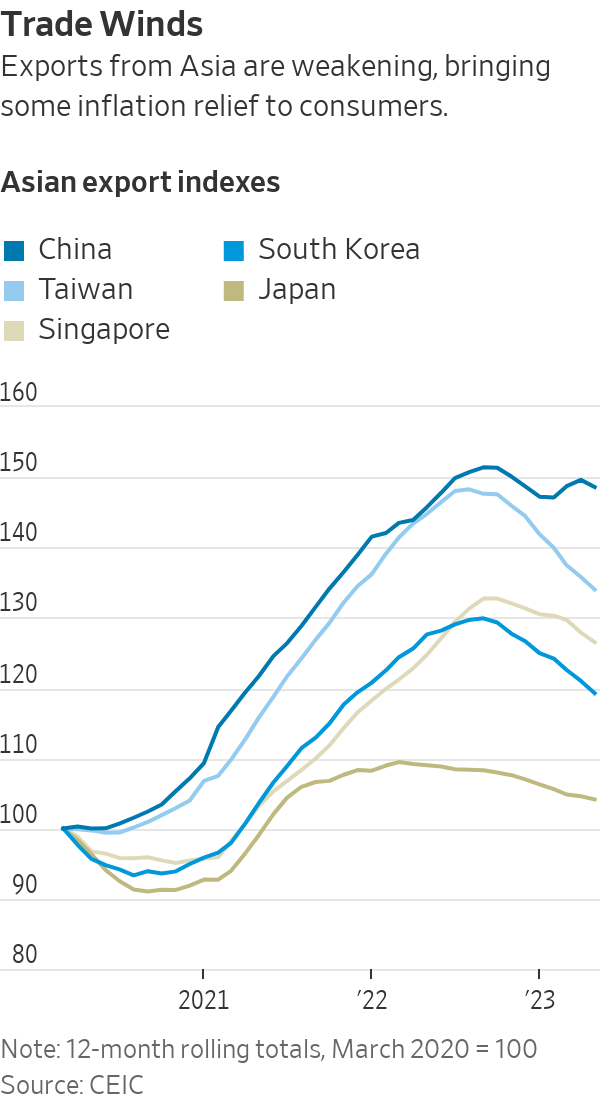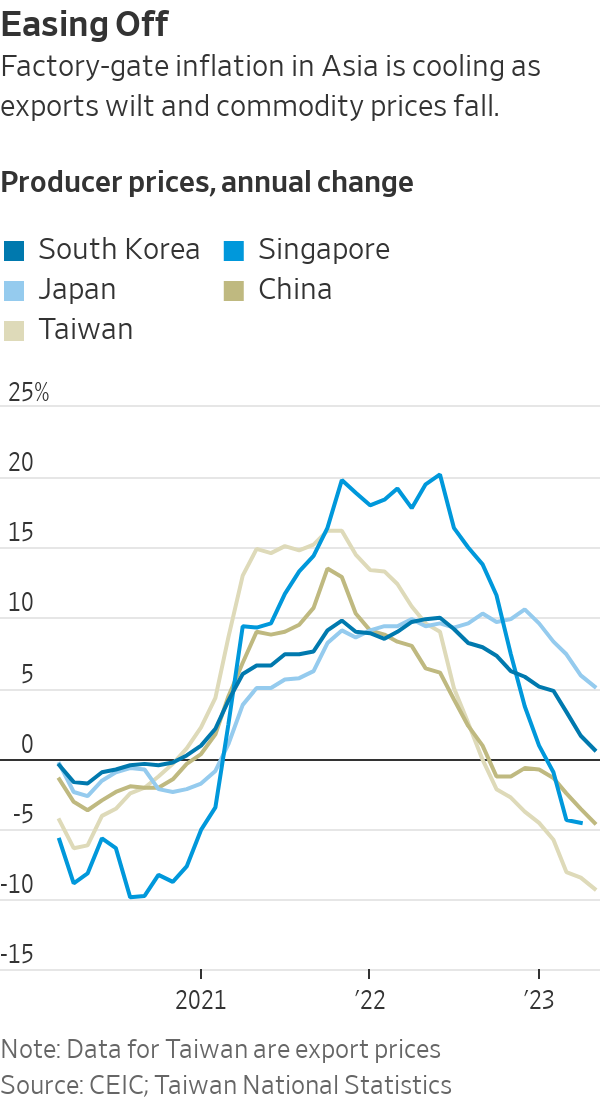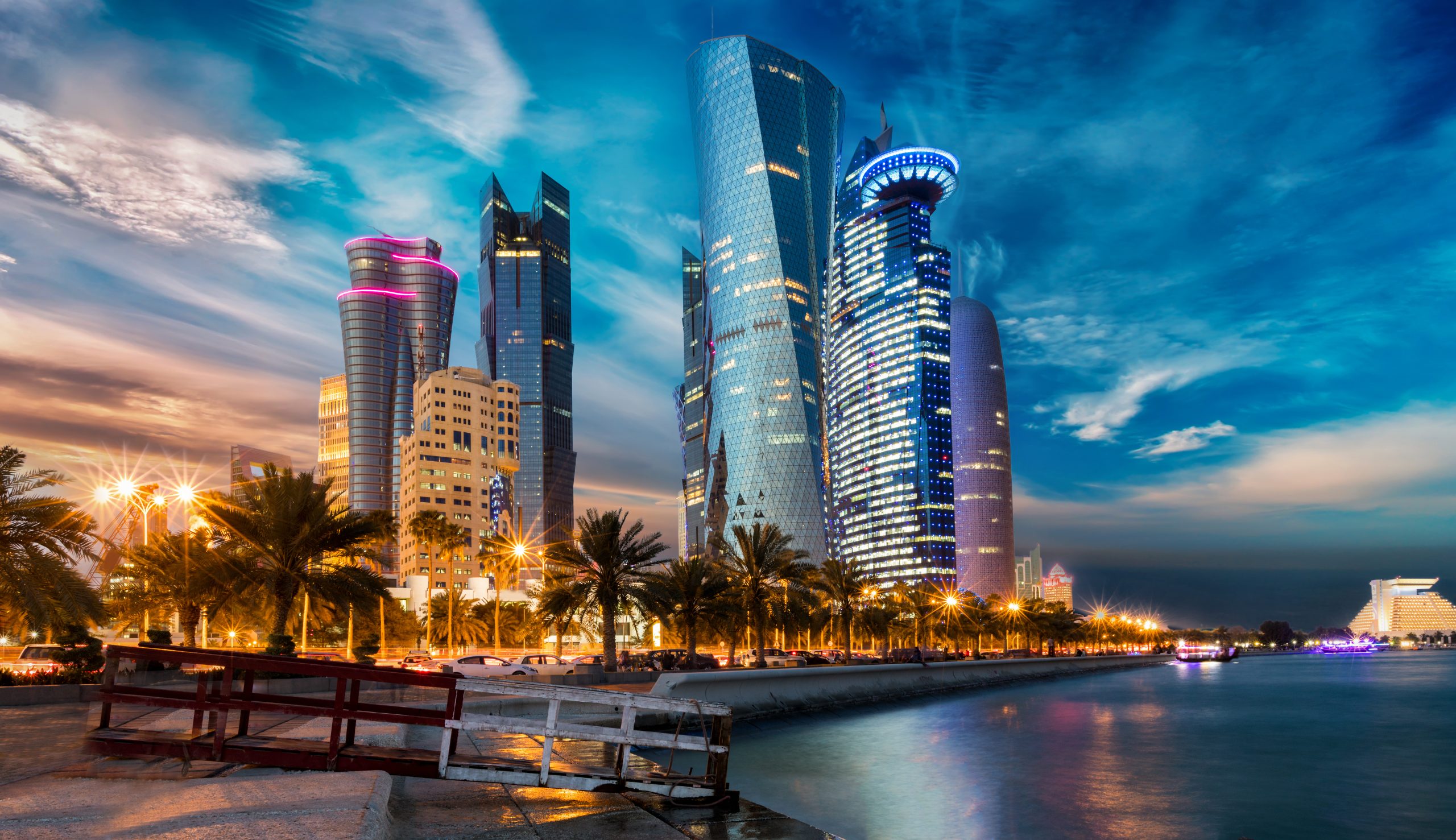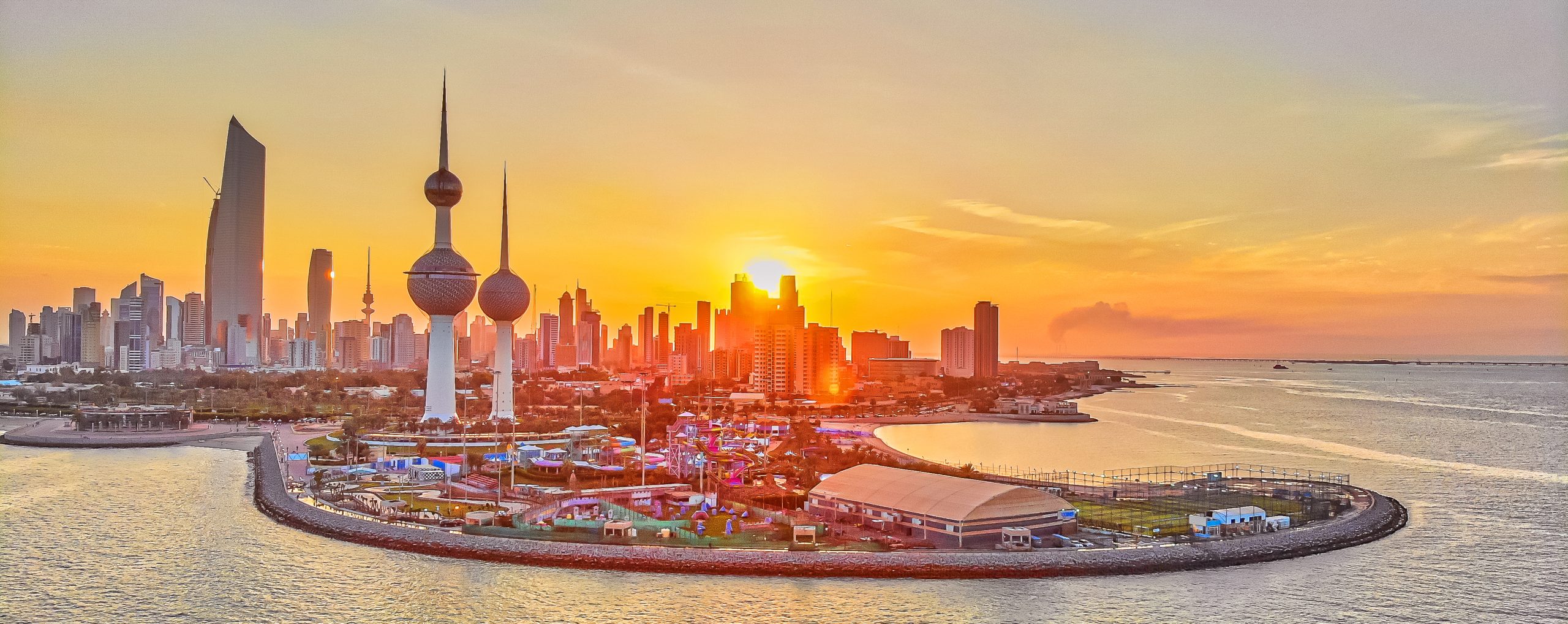Trade Woes in Asia Bring Inflation Relief to U.S. Consumers
But slowing exports to Western nations won’t alone stem rapidly rising prices
SINGAPORE—Sinking global trade is pummelling Asian exports, bringing some relief on inflation to U.S. and other Western consumers.
But easing prices for home furnishings, electronics and other manufactured goods don’t signal high inflation will soon be defeated. Wage growth and services price gains are still elevated. And central banks in the U.S. and Europe are warning they aren’t finished raising interest rates in their fight to cool inflation.
Cheap Asian goods helped keep a lid on price growth for decades before the pandemic. Economists say that phenomenon is unlikely to return with the same intensity now that the high-water mark of globalisation has passed.

Asia’s powerhouse exporters enjoyed a boom in overseas sales during the pandemic as locked-down consumers splurged on new computers, workout gear and home improvements.
On a rolling 12-month basis, the U.S. dollar value of exports from China, Japan, South Korea, Taiwan and Singapore peaked last year in September at $6.1 trillion. That was 40% higher than recorded over the 12 months through March 2020, when the pandemic began, according to a Wall Street Journal analysis of official figures compiled by data provider CEIC.
Asian exports started sliding late last year as rising interest rates took some heat out of economic growth. Western consumers have slowed spending on goods in favour of eating out, traveling and other services they missed during the pandemic. Hopes that China’s reopening would spur a rebound in trade have fizzled along with the country’s consumer-led recovery.
Exports from South Korea over the 12 months through May were 11% lower than they were in the year through September. Taiwan exports were down 14% over the same period. Singapore’s were down 6%, Japan’s 4% and China’s by 3%.
The weakness in trade is showing up in the prices charged for goods when they leave Asia’s factories. Chinese producer prices fell 4.6% in May compared with a year earlier, the eighth straight month of declining supplier prices in the world’s largest factory floor. Similar gauges of inflation in other Asian exporter economies are weakening, too, as lower commodity prices reduce costs and collapsing demand for goods saps companies’ pricing power.
The effects of cooling Asia trade are starting to be felt in the U.S., where the Federal Reserve signalled it expects to further increase interest rates after holding them steady this month.
U.S. import prices for goods from Hong Kong, Singapore, Taiwan and South Korea were down 6.3% in May compared with a year earlier, according to the Labor Department. Import prices were down 2% from China and 3.7% from the Association of Southeast Asian Nations, a 10-member group that includes Indonesia, Malaysia and Thailand.

The prices paid by importers don’t quite line up with the prices faced by consumers, as companies need to cover labor, shipping and other costs to get products into stores.
Nonetheless, prices declined in May from a year earlier for a variety of goods in the U.S. that are often sourced from Asia, including furniture, home appliances, televisions, sports equipment, computers and smartphones.
Overall U.S. inflation is proving resilient, though. The consumer-price index, which measures what Americans pay for goods and services, rose 4% in May from a year earlier—twice the Fed’s 2% goal. Core consumer prices, which exclude food and energy, climbed 5.3%.
If surging prices for goods during the pandemic delivered the first burst of inflation, and rocketing energy prices after Russia invaded Ukraine propelled the second, then the current stickiness of inflation is being fuelled by increases in wages and the price of services. So while easing goods-price inflation is welcome, it doesn’t mean central banks have won the battle, economists say.
“The disinflation impulse coming from Asia is not going to be the magic bullet for the West’s inflation problem,” said Frederic Neumann, chief Asia economist at HSBC in Hong Kong, referring to the slowing pace of price increases.
In the decades before the pandemic, the integration of China into the global economy contributed to a long spell of low and stable inflation enjoyed by many Western economies. The broader integration of markets for goods, services, labor and capital under the banner of globalisation meant cheaper goods for consumers and fewer inflation worries for central banks, though economists debate just how big the effects were.
Now, governments and corporations are tiptoeing away from unfettered globalisation in the interests of security and economic resilience. Manufacturers are adding factories in Vietnam or India while reducing their reliance on China, reflecting concern over icy relations between the U.S.-led West and Beijing. Governments are dangling subsidies in strategic industries such as semiconductors and green-technology products to bring investment and jobs home.
Such trade fractures can increase costs for manufacturers, which, alongside healthier global demand, suggests that inflation in the future won’t be as subdued as it was in the recent past, economists say.
That doesn’t mean globalisation is over or that Asia won’t remain a competitive place to manufacture. But it does mean Asia is unlikely to be as potent a force in tempering price gains as it once was.
“The golden era of globalisation—and the disinflationary pressure associated with that—I think that has gone,” said Neil Shearing, group chief economist at Capital Economics in London.
 Copyright 2020, Dow Jones & Company, Inc. All Rights Reserved Worldwide. LEARN MORE
Copyright 2020, Dow Jones & Company, Inc. All Rights Reserved Worldwide. LEARN MORE
Chris Dixon, a partner who led the charge, says he has a ‘very long-term horizon’
Americans now think they need at least $1.25 million for retirement, a 20% increase from a year ago, according to a survey by Northwestern Mutual
Employment grew for the 16th consecutive month as companies expanded.
According to a recent PMI report, Qatar experienced its fastest non-energy sector growth in almost two years in June, driven by surges in both existing and new business activities.
The Purchasing Managers’ Index (PMI) headline figure for Qatar reached 55.9 in June, up from 53.6 in May, with anything above 50.0 indicating growth in business activity. Employment also grew for the 16th month in a row, and the country’s 12-month outlook remained robust.
The inflationary pressures were muted, with input prices rising only slightly since May, while prices charged for goods and services fell, according to the Qatar Financial Centre (QFC) report.
This headline figure marked the strongest improvement in business conditions in the non-energy private sector since July 2022 and was above the long-term trend.
The report noted that new incoming work expanded at the fastest rate in 13 months, with significant growth in manufacturing and construction and sharp growth in other sectors. Despite the rising demand for goods and services, companies managed to further reduce the volume of outstanding work in June.

Companies attributed positive forecasts to new branch openings, acquiring new customers, and marketing campaigns. Prices for goods and services fell for the sixth time in the past eight months as firms offered discounts to boost competitiveness and attract new customers.
Qatari financial services companies also recorded further strengthening in growth, with the Financial Services Business Activity and New Business Indexes reaching 13- and nine-month highs of 61.1 and 59.2, respectively. These levels were above the long-term trend since 2017.
Yousuf Mohamed Al-Jaida, QFC CEO, said the June PMI index was higher than in all pre-pandemic months except for October 2017, which was 56.3. “Growth has now accelerated five times in the first half of 2024 as the non-energy economy has rebounded from a moderation in the second half of 2023,” he said.
Chris Dixon, a partner who led the charge, says he has a ‘very long-term horizon’
Americans now think they need at least $1.25 million for retirement, a 20% increase from a year ago, according to a survey by Northwestern Mutual





















